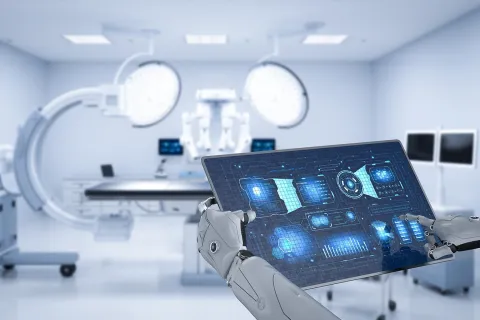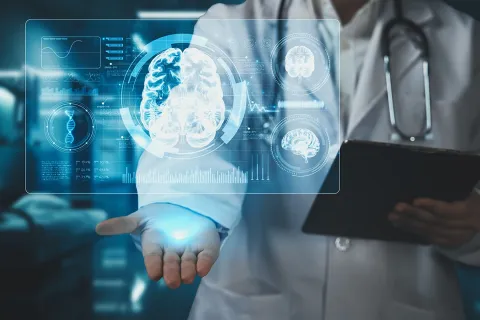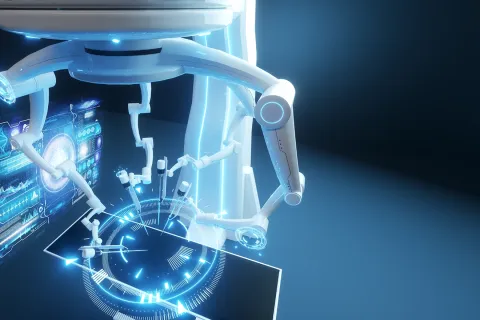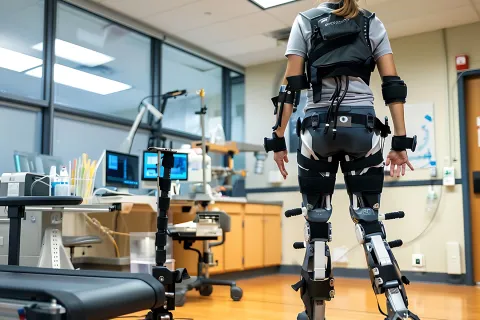
DMHT is a digital and software product that supports mental health and wellbeing. Digital Mental Health Technologies (DMHTs) are reforming how mental health services are delivered across the UK, from mobile apps that help users manage anxiety to AI-powered chatbots offering therapeutic support. These include computers, mobile phones, fitness wearables, and virtual reality (VR) headsets, or medical technology, such as transcranial direct current stimulation (tDCS) headsets. DMHTs are making mental health resources more available and personalised to the requirements of mental wellbeing UK and the broader mental health technology landscape.
The Medicines and Healthcare products Regulatory Agency (MHRA), in collaboration with the National Institute for Health and Care Excellence (NICE), has established specific guidance for manufacturers. This guidance helps determine whether a DMHT qualifies as software as a medical device UK (SaMD) and outlines the classification and regulatory requirements for market placement within Great Britain (GB) and Northern Ireland. Understanding the UK medical device classification framework is essential for DMHT regulatory compliance UK.
Device Characterisation – Defining Intended Purpose and Functionality
The journey toward regulatory compliance begins with accurately characterising the DMHT. Device characterisation refers to defining the intended purpose—what the product is designed to do—and depicting its technical functionality. This step is foundational as it informs not only the qualification and classification processes but also the type of clinical evidence that will be required for digital mental health device regulation.
It is essential to highlight that the device characterisation (intended purpose and functionality) will inform the type of clinical evidence required. The clinical evidence obtained may, in turn, affect the device characterisation. For instance, a device's intended purpose and functionality should be consistent within the clinical studies and its application in real-world settings. Further, if the clinical evidence demonstrates a contraindication in a particular population group, the device characterisation needs to be updated to reflect this.
Device characterisation—defining the intended purpose and functionality—is a critical step in product development. It informs regulatory classification, risk assessment, clinical evidence requirements, and market adoption. It is the manufacturer’s responsibility to ensure the intended purpose is clearly and consistently communicated across labeling, instructions for use, promotional materials, and technical documentation. The MHRA DMHT characterisation form can be used by manufacturers to define and communicate it to MHRA, which supports UK MHRA digital health regulation and SaMD classification UK.
MHRA and IMDRF guidance provide frameworks to support this, and the MHRA DMHT characterisation form should be used when raising regulatory queries.
Determining Qualification as Software as a Medical Device (SaMD)
Once the intended purpose and functionality have been clearly defined, the next step is determining whether the DMHT qualifies as a SaMD. This determination centers on two main questions:
- Does the DMHT have a medical purpose?
Review the definition of the EU Medical Device Directive (MDD)/MDR/UK MDR. As per UK MDR/EU MDD/EU MDR, a product is considered to have a medical purpose if intended for diagnosing, preventing, monitoring, treating, or alleviating, among others, mental health conditions. This includes formal diagnoses and clinically relevant symptoms, even if not explicitly diagnosed. For example, if an app monitors anxiety and offers interventions based on symptom severity, it may be considered to have a medical purpose, placing it under mental health classification for regulatory compliance.
It can be determined by –
- Does the DMHT perform a clinical task? If No – the DMHT does not have a medical purpose. If yes, proceed to step 2.
- Does the DMHT target clinical conditions and symptoms?
Evaluate whether the DMHT addresses recognised clinical conditions or symptoms using the definitions and examples provided in the guidance document.
- If No → The DMHT does not have a medical purpose.
- If Yes → The DMHT has a medical purpose and may qualify as software as a medical device UK.
The guidance document includes 29 example functions to help interpret how different device functionalities work.
Determining Regulatory Classification
If a DMHT is to be eligible as SaMD, the next step is determining its classification under applicable medical device regulations. This classification directly affects the scrutiny level, clinical evidence requirements, and approval process. Whether to follow the EU MDD, EU MDR, or the new UK framework depends on where and when the DMHT will be placed on the market.
UK MDR & EU MDD Classification Rules
- Implementing Rule 2.3 (Software)
- Rule 9 (Active Therapeutic Devices)
- Rule 10 (Active Diagnostic Devices)
- Rule 12
- Software Specific Guidance (MHRA SaMD)
DMHT used therapeutically to predict mental health disorders is classified as Class IIa. If no definitive information is provided, the manufacturer must monitor consumption or consider Class I.
EU MDR Classification Rules (From MDCG 2019-11)
- Implementing Rule 3.3 (Software)
- Software driving/influencing a device is in the same class as the device.
- Independent software is classified on its own merits.
- Implementing Rule 3.5
- When multiple applicable rules exist, the strictest (highest risk) classification applies.
- Rule 9 (Active Therapeutic Devices)
- Class IIa: Devices for managing and exchanging energy.
- Class IIb describes potentially dangerous energy equipment.
- Class IIb devices include those that control, monitor, or influence Class IIb therapeutics.
- Class IIb: Devices that use ionizing radiation for treatment.
- Class III includes devices that regulate, monitor, or influence active implanted devices.
- Rule 10 (Active Diagnostic Devices)
- Class IIa devices provide energy to the body (except visible light), image radiopharmaceuticals, and monitor critical physiological processes.
- Class IIb devices monitor crucial physiological indicators and are utilized in critical clinical circumstances.
- Class IIb devices emit ionizing radiation for diagnostic/therapeutic radiology.
- Rule 11 (Software Specific)
- Class IIa software provides information for diagnostic or therapeutic decisions.
- Class III software involves judgments that may result in death or irreparable damage.
- Class IIb software refers to judgments that can lead to significant deterioration or surgical intervention.
- Class IIa software monitors physiological processes (excluding critical indicators in urgent danger).
- Class IIb software monitors crucial physiological characteristics that pose an imminent hazard risk.
- Class I includes all other applications.
- Rule 22
- Class III: Active therapeutic devices with integrated diagnostic functions that significantly determine patient management (e.g., closed-loop systems, AEDs).
This classification framework supports UK medical device classification and SaMD classification UK, critical for DMHT market approval UK.
Conclusion
Digital Mental Health Technologies regulation in the UK is designed to ensure these innovations are safe and effective within the evolving field of mental health technology and mental health and wellbeing. By meticulously defining the product’s intended purpose and functionality, determining whether it qualifies as SaMD, and applying the correct regulatory classification, manufacturers can navigate the complex landscape with greater clarity and confidence.
As DMHTs continue to grow in sophistication, adhering to this regulatory framework is essential for DMHT regulatory compliance UK and building trust with users and healthcare providers. This ensures that digital mental health care products and tools are innovative but also reliable and impactful in real-world care settings, contributing positively to mental wellbeing and mental health in the UK.









